I make no secret about being a Winston aficionado. I own a Winston rod from every production run except for a Loomis-rolled IM6. My quiver is predominantly emerald green.
So when I heard the news of a new rod from Winston I assumed that, as usual, the new rod would replace an existing rod series. However, with the AIR, that’s not the case. It’s a standalone series in weights 2 – 6.
And the more I fish it, the more I think it’s possibly the best fly rod Winston’s ever built.
You can accuse me of bias, but I also fish (and love) a Sage XP, VXP, a handful of Redington and Orvis, rods, in addition to Heddon and J.S. Sharpe’s bamboo. Winston rods are generally my go-to for dry flies and the Boron IIIx has worked its way to the front of my quiver when I need a do-it-all 9’ 5wt, but the XP is a very close second.
The AIR stands out from that pack, impressively so. For starters, it’s notably lighter than the Boron IIIx. My review model was a 9’ 5wt, and when compared with that same configuration from the Boron IIIx line, the AIR won in the weight category.
The taper on the two rods is actually strikingly similar, though the AIR is noticeably skinnier at the top than the Boron IIIx.
Where the AIR pulls away and makes a name for itself as an incredible line of rods is how well it fishes. Lawn casting this rod doesn’t do it justice. You have to get it on the water.
The butt section is strong but not stiff, and while the action is definitely medium-fast the AIR retains the classic “Winston feel” while casting. Paired with an Abel TR-2 and Winston’s Energy line (the WF5F is 144gr, 4 gr over the target 140gr weight set by AFFTA for 5 weight lines) the rod casts tight loops that unroll and lay on the water with an uncanny subtlety. The line speed isn’t as quick as the Boron IIIx, and doesn’t touch what you’ll get from a Sage MOD or a Scott Radian, but the line speed isn’t so slow that you lose accuracy or power when faced with wind. It’s unfairly accurate, turns over long leaders with ease, and would be my first choice for throwing dry flies or a dry-dropper rig. Light nymph rigs work well, as do smaller streamers; a quick haul gets the line speed up enough to throw some meat, but by no means is this a go-to streamer rod. In short, it’s everything you’d expect a Winston rod marketed as a presentation tool to be, but it’s just so good I wonder what, if any, rod can top it.
The AIR is also the first rod from Winston to feature their new SuperSilica resin system. The silica is baked into Winston’s Boron graphite and removes excess weight from the carbon fibers after drying.
In plain English, the SuperSilica resin allows Winston to create a rod that’s lighter, maintains their classic action, yet reduces tip wobble and increases rod sensitivity.
The biggest thing standing between you and an AIR is the $945 price tag. While you do get Winston’s lifetime warranty I’m not sure I could plunk down nearly a grand for a new production graphite rod.
That said, it’s still worthy of consideration. With the broad strokes covered, let’s dive into what worked and what didn’t with the AIR.
What Works
Presentation
Winston billed the AIR as a presentation rod, and that’s exactly what it is. Need to throw a size 26 midge to rising trout on a glassy pool? No problem. How about a size 6 hopper, right up under a branch about three inches from the bank? The AIR gets the job done.
The tip on the AIR has enough backbone to let you cast in tight quarters, and the rod as a whole is just exceptional out to 50 or so feet. Unless you’re trying to mess up the cast, the AIR carries line swiftly through the air and lands it on the water without undue disturbance at just about every reasonable trout-fishing distance.
Action
One thing that’s surprised me as I’ve collected vintage and new Winstons alike is how similar their action is. I have a pre-IM6 Fisher-rolled 8’6” 4wt with the old trophy cup logo – widely regarded as one of Winston’s best rods ever – and while that older rod is slower than the AIR, the two rods have a strikingly similar feel. The AIR feels like a Winston, which is important for those who love these rods.
Paired with the right line (I wouldn’t load this with anything more than a half-weight heavy; SA MPX is likely the heaviest you should go) the AIR is just plain fun to cast. Feeling the load come off the tip on your back cast to moving the rod forward, you really do feel all the line as it sails through the air in a nice, tight loop. It also roll casts wonderfully well.
The AIR is slower than a lot of production rods. The Scott Radian, Sage X and One, Orvis Helios 2, Redington Hydrogen, and Hardy Zephryus are all much faster. If you fish the aforementioned rods, or ones with similar actions, you’ll have to adjust your casting stroke a bit to get the most from the AIR. It’s not bamboo or fiberglass slow, mind you.
Build quality
Winston continues to produce the best-looking and most well-built production rods on the market. The AIR is no exception. The cork is the highest commercial grade, paired with the usual burled box elder wood insert on the reel seat and a nickel silver butt cap. Winston’s standard Nanolite stripping guide and hard-chromed Snake guides adorn the rest of the rod.
What Doesn't
Big bugs
Streamers, really big dries, and heavy nymph rigs bite into the AIR’s power and presentation abilities. While it’s certainly a rod you can use for streamers or big dries, if you need to switch in the middle of the day and don’t have another rod handy, it’s not a go-to big bug rod. The Boron IIIx is better with bigger bugs.
Distance
If you’re used to punching laser-tight loops out past 60 feet with ease, the AIR isn’t the rod for you. Just like any other fly rod, it will cast a full line. But getting it to do that is all in the caster’s abilities. However, for an average Joe caster such as myself, I had a hard time getting the loop to stay together past 60 feet.
Power in wind
The butt section of the AIR is thicker than you’d expect a lightweight presentation rod to be, and it certainly helps to turn big trout (and absorb head shakes from the light tip so you don’t break 6x tippet), but it doesn’t pack the wind-cutting power of the Boron IIIx or other industry-leading 9’ 5wt rods.
Part of the testing for this rod took place in Oregon, and my second day on the river the wind picked up enough I had to pack the AIR away and pull out my Boron IIIx. A slight breeze won’t affect the AIR’s performance, but gusts or consistent wind over 10mph will make you work hard or reach for a stiffer rod.
Price
As mentioned earlier, this rod is $945. You do get a lifetime warranty, and Winston’s warranty service was great the one time I’ve had to use it, but even with the performance of the AIR and the warranty I don’t know if I could drop that kind of cash on a niche rod.
Now, if you fish dry flies exclusively, or spend more time on small Rocky Mountain streams and rivers and rarely throw flies bigger than a size 8, the AIR is likely your perfect rod. It’s the best modern graphite dry fly rod I’ve used in recent memory (the Sage LL comes to mind . . . oh, what a rod) and the AIR’s ability to present flies with such delicacy is still surprising even after fishing it for two weeks. In the end, it’ll be up to you to determine if the price is hindrance to buying the AIR.
Final Word
Winston’s done what I didn’t think they could do – they’ve created a modern dry fly rod that fishes better than their vintage graphite. Those vintage rods are highly prized by collectors and I’ve spent more than I’ll ever admit snatching up my rods, but the AIR outperforms them all.
Unfair accuracy, buttery-soft presentation, a relaxed moderate-fast action and top-notch build quality come together to form a rod that should rule the dry fly market for the foreseeable future. It’ll throw dry dropper and small nymph rigs well, and the occasional small streamer too.
The lack of power in the wind and when throwing big bugs aside, the AIR is still exceptional. The price tag will be what stops a lot of anglers from buying this rod. There’s nothing performance wise that wouldn’t make anyone who fishes dries, dry-droppers, or small nymphs the majority of the time not want this rod.
I’m going to have to one helluva time sending this rod back to Winston. I think it’s their best effort yet, and I look forward to seeing the SuperSilica resin system applied to the Boron IIIx lines in the near future.





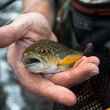






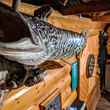



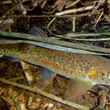




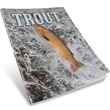
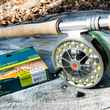








Comments
pablo replied on Permalink
I Do, too, look forward to seeing soon the Super-Silica resin system applied to the Boron IIIx and the PLUS series of rods, especially in the Heavy Weights, Salt-Water models and "Jungle" rods. That´d be creating a Game Changer series of rods!
Jos replied on Permalink
Thanks Spencer for the good review.
I live in the Netherlands so my English is not perfect but i give i a try.
For several reasons i stopped fishing 10 years ago, and sold almost all of my gear. My gear were 7 Winston rods.
Last weekend, after 10 years no fishing, i picked up the only rod i didn't sell, my favourite 3pc IM6 8 1/2' #5 and my old Loop dry fly reel. I didn't sell this this combo because it was my first an most beloved Winston.
Fish i did not catch, but the casting was feeling so good like i never stopped.
Now i am considering to restart my old hobby and after reading your review i think i will have a closer look to the AIR.
My other favourite rods were 2 DL4's (hard to find).
Greets
Pages